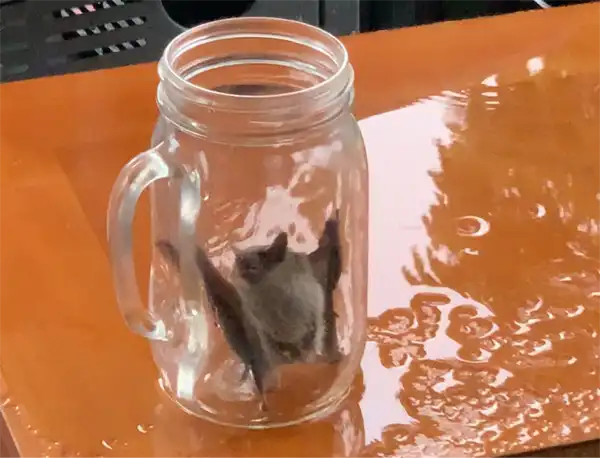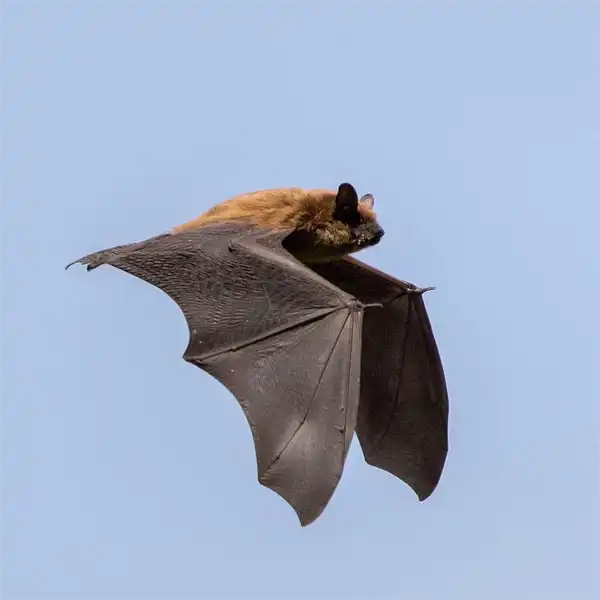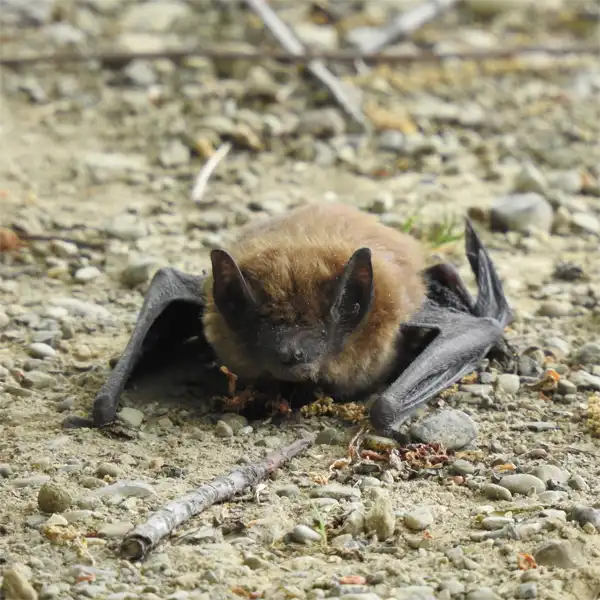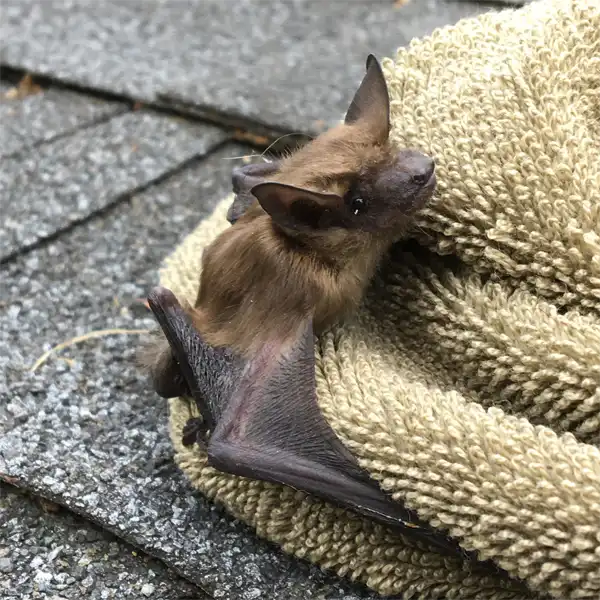Big Brown Bat
- Scientific Name
- Eptesicus fuscus
- Also Known As
- Big Brown Bat
- Range
- All of Florida
- Diet
- Beetles, Flies, Cockroaches, Flying Insects
- Life Expectancy
- 5 - 6 Year
Quick Links
Brown Rats in Central Florida
The big brown bat (Eptesicus fuscus) is a common vespertilionid bat species found throughout much of North America. In central Florida, big brown bats thrive in urban and rural areas, roosting in buildings and foraging over water. This guide covers identification tips, biology, behavior, reproduction, ideal habitat, diet, health risks, and prevention and control of big brown bats in central Florida.
Appearance and Identification
Big brown bats can be identified by the following physical characteristics
Maturation Rate
Big brown bat pups grow rapidly after birth due to the high energy demand of flight. They are nearly adult sized in 3 to 4 weeks after birth. Pups become volant by 18 to 21 days old.
Sexual maturity is reached at 6 months to a year old. Average lifespans in the wild are 5 to 6 years for females and 2 to 3 years for males.
Habits and Behavior
Big brown bats are nocturnal, leaving roosts at dusk to forage. They utilize echolocation to navigate and hunt prey during flight. Big brown bats fly steadily and are fast, agile fliers.
They roost in hollow trees, rock crevices, bridges, barns, attics, and other man-made structures in both urban and rural areas. Big brown bats hibernate in winter in caves or buildings, entering torpor when temperatures drop below 10°C.
Reproduction and Lifespan
Mating occurs in autumn just prior to hibernation. Females store sperm over winter until spring. In May and June, females gather in maternity colonies of 20 to 300 bats.
Gestation is 60 days, after which a single pup is born in June or July. Pups begin flying by 3 weeks old. Lifespans in the wild average 5 to 6 years.
Ideal Habitat and Range
Central Florida’s humid, subtropical climate offers ideal habitat for big brown bats. Average temperatures range from the mid 60s°F (18°C) in winter to over 90°F (32°C) in summer. Lakes, swamps, and coastal areas provide drinking water.
Older human structures like barns, attics, and bridges offer roost sites. Tree roosts include palms and hardwoods with cavities like oak and cypress. Caves offer hibernacula sites during winter.
Plentiful insects provides sustenance during the warmer months. Open habitats like wetlands, pastures, and waterways give bats room to forage with less obstacles.
Diet and Feeding
Big brown bats are insectivorous, consuming a variety of flying insects each night equal to 25% to 100% of their body weight:
- Beetles – Scarabaeidae, Carabidae, Tenebrionidae
- Moths – Noctuidae, Geometridae
- Flies – Mosquitoes, Midges
- Mayflies
- Caddisflies
Foraging occurs above water sources, wetlands, forest edges, livestock pastures, and urban areas. Big brown bats use echolocation to detect and capture insects during flight.

Photo 213987319 © herexton, CC BY-NC

Common Health Risks
While overall low risk for disease transmission to humans, big brown bats can carry:
- Rabies – Fatal viral disease. Transmitted by bites and saliva. Vaccines preventive for high risk groups.
- Histoplasmosis – Fungal respiratory infection from dried droppings inhalation. Causes flu-like illness.
- Ectoparasites – Bat bugs, mites, fleas. Can bite humans if infestations spread from bats to homes.
Preventing Big Brown Bats
To prevent home invasions, inspect for and seal any gaps or openings greater than 1/2 inch. Install draft guards beneath doors. Ensure attic vents are properly screened.
Trim tree branches back from the house. Use ultrasonic, motion-activated deterrents. Never handle bats directly due to bite and rabies risk. Hire a professional for bat removal and exclusion.
Big Brown Bats in Central Florida – Conclusion
With proper preventative exclusion methods and monitoring for signs of infestation, big brown bats pose minimal health risks to homeowners. Their insectivorous appetites provides natural pest control services. Population numbers remain healthy across central Florida, beneficial for local ecosystems. Through sensible coexistence practices, bats boost regional biodiversity, while their negative impacts are mitigated.







